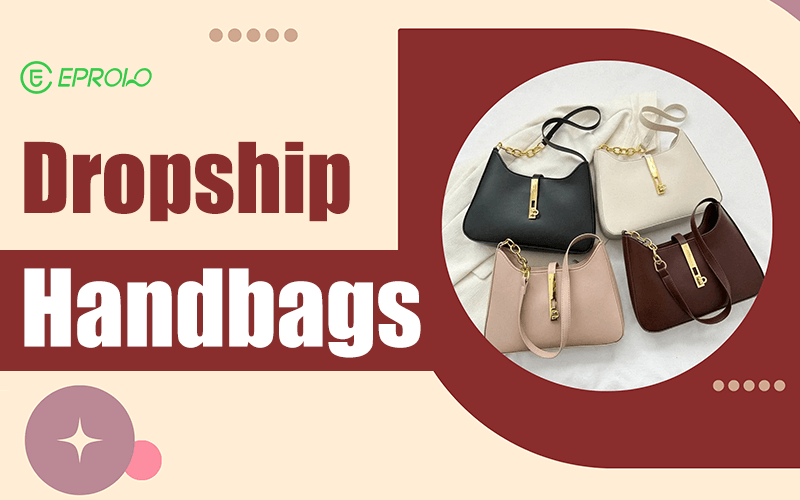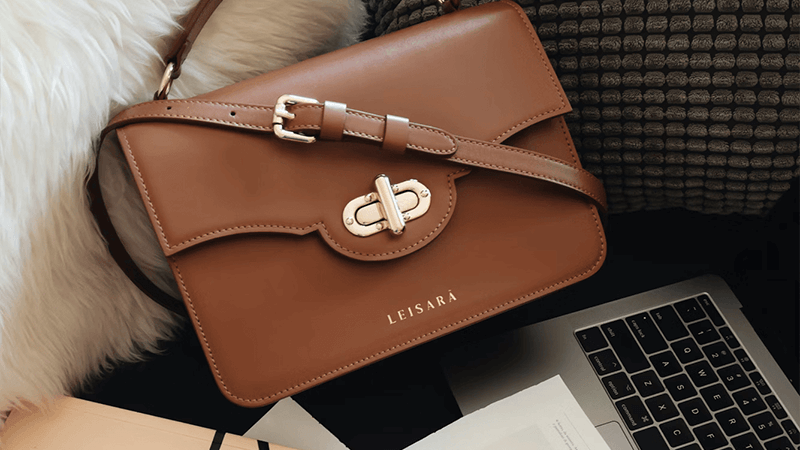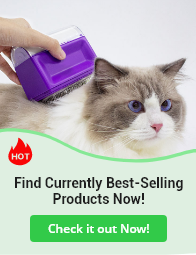Se suas bolsas parecem baratas, sua marca parece barata. É assim que os consumidores te julgam—muito antes de se importarem com o que seu logo diz.
Você não está apenas procurando inventário barato. Você está procurando produtos que pareçam que não deveriam ser baratos. Bolsas que mantêm a forma, parecem feitas com intenção e não se desfazem após alguns usos. É isso que vende. É isso que faz os clientes voltarem.
Encontrar as bolsas de dropshipping certas significa saber onde economizar—e onde nunca comprometer. É assim que vendedores sérios permanecem lucrativos sem arruinar sua reputação.

Visão geral da página:
01 | Não persiga a bolsa mais barata. Persiga a margem mais inteligente.
02 | O estilo é uma arma de vendas — se você souber como usá-lo
03 | Teste a qualidade onde os clientes notarão primeiro
04 | Escolha um fornecedor que realmente entenda de branding
05 | O preço não é apenas números, é enquadramento
06 | Gire rápido, mas com controle
Conclusão: Pareça barato, venda devagar. Sinta-se premium, venda rápido.
Perguntas frequentes: como encontrar e vender bolsas acessíveis
01 | Não persiga a bolsa mais barata. Persiga a margem mais inteligente.
Muitas plataformas vão te vender bolsas de $3. Elas são macias, sem estrutura, brilhantes e vêm com um cheiro misterioso. Você economiza dinheiro—mas paga por isso em devoluções e avaliações de 1 estrela.
O movimento mais inteligente? Mire na faixa de $6-$10 e trate o produto como se fosse de $50. Pergunte a si mesmo:
- Ela parece estruturada nas fotos?
- O ferramental é de metal, e não plástico pintado?
- O forro existe—ou é apenas tecido cru?
Barato não precisa significar descartável. As melhores bolsas acessíveis são feitas com propósito: costuras limpas, texturas realistas e silhuetas que se destacam em fotos planas.
02 | O estilo é uma arma de vendas — se você souber como usá-lo
A maioria dos novos vendedores escolhe bolsas como se estivesse comprando para si. Movimento errado.
Seu trabalho não é comprar o que você gosta. É entender o que vende—rápido—e em que contexto.
Em vez de enviar em massa 50 estilos aleatórios, concentre-se em:
- 1-2 silhuetas principais (crescent, hobo, mini tote)
- 1-2 paletas sazonais (tons terrosos para o outono, pastéis para a primavera)
- 1-2 âncoras de uso: “minimalismo para o trabalho,” “tarefas de fim de semana,” “pronta para a noite”
Depois, agrupe essas opções em coleções. Dê nomes. Crie um clima. Você não está vendendo uma bolsa—você está vendendo acesso a um estilo de vida. É assim que um item de $9 se transforma em um momento de marca de $45.
Vendedores bem-sucedidos entendem como criar uma presença de marca impressionante mesmo com recursos limitados—uma estratégia central que novos dropshippers inteligentes usam consistentemente para crescer.

03 | Teste a qualidade onde os clientes notarão primeiro
Os clientes nem sempre conhecem os materiais, mas percebem quando algo falha. É aí que eles te julgam:
- Alças: Se esticam ou torcem, acabou para você.
- Zíperes: Nada mata a sensação de “premium” mais rápido do que um zíper barato que trava.
- Cheiro: PU sintético não deve exalar cheiro de fábrica química.
- Forma: Se chega amassada ou colapsa como uma sacola de papel, não vai fotografar bem.
Pegue amostras. Teste até o limite. Use-as. Jogue no banco de trás do carro. Depois decida o que vai para o seu site.
04 | Escolha um fornecedor que realmente entenda de branding
É aqui que a maioria das plataformas de fornecimento falha. Você quer bolsas que sejam:
- Não superexpostas em sites de baixo custo
- Personalizáveis além do simples print-on-demand
- Disponíveis em coleções curadas—não apenas SKUs aleatórios
Por que EPROLO?
A EPROLO oferece algo que a maioria das plataformas de fornecimento não oferece: um caminho real para construir sua marca. Você obtém:
- Acesso a preços diretos de fábrica com filtros de qualidade integrados
- A capacidade de personalizar embalagens, etiquetas e tags.
- Suporte para sacos protetores, caixas com marca, inserts e mais
- Dropshipping rápido a partir de depósitos nos EUA, UE ou China
- Integrações perfeitas com Shopify, WooCommerce e Etsy
Ainda melhor? A EPROLO armazena seus materiais de marca e os aplica automaticamente a cada unidade—sem taxas de depósito, sem caos na embalagem. Se você está tentando construir uma marca real de bolsas—e não apenas revender produtos—esse backend faz toda a diferença.
05 | O preço não é apenas números, é enquadramento
Se você cobra $35 por uma bolsa que parece valer $12, os clientes vão perceber. E eles não voltarão.
Em vez disso:
- Crie efeitos de ancoragem—coloque uma bolsa principal de $59 ao lado de uma opção intermediária de $39
- Ofereça kits: conjuntos “transversal + mini carteira” aumentam o valor percebido
- Mostre casos de uso—não apenas liste características; mostre como a bolsa completa um look
E nunca ignore a embalagem. Envolver uma bolsa de $9 em um saco protetor com marca e em uma caixa rígida de envio transforma toda a experiência.
06 | Gire rápido, mas com controle
Bolsas seguem ondas de tendência. Mas isso não significa que você deve lançar 200 SKUs por mês.
Em vez disso:
- Faça lançamentos limitados (10-15 SKUs), retire os produtos com baixa saída, destaque os bestsellers
- Crie urgência com lançamentos temporizados ou edições sazonais
- Use a sincronização automática da EPROLO para remover itens fora de estoque e manter sua loja organizada
O objetivo não é “encher as prateleiras.” O objetivo é fazer cada item parecer escolhido. Para vendedores que estão expandindo sua linha de produtos com variações, aprender a criar e gerenciar múltiplos SKUs de forma eficiente para seus produtos pode simplificar drasticamente o processo de gerenciamento de estoque.
Conclusão: Pareça barato, venda devagar. Sinta-se premium, venda rápido.
Os consumidores não precisam de luxo—eles precisam de algo que pareça valer a pena. Esse é o truque.
Encontrar bolsas acessíveis não se trata de achar o menor preço. Trata-se de encontrar o melhor valor por dólar—e construir uma marca em torno disso.
Com o olhar certo, o backend certo (como a EPROLO) e a disciplina para filtrar produtos de baixa qualidade, você pode construir um negócio de bolsas que cresce sem jamais parecer apenas mais um produto dropshipped.
FAQ: Sourcing Trendy Officewear on a Budget
1. Qual é um custo unitário realista para uma bolsa que pareça “premium” mas ainda gere lucro?
O ideal é mirar em um custo final de $6-$10 (incluindo frete). Nesse ponto de preço, você consegue bolsas que parecem estruturadas, usam ferragens decentes e não parecem de plástico. Não é necessário couro—basta qualidade crível.
A partir daqui, um preço de varejo de $35-$50 é realista, especialmente se você combinar com boa marca e embalagem.
2. Como saber se uma bolsa “barata” vai causar problemas depois?
Três sinais para observar:
- Zíperes grudando ou frágeis: A maioria dos compradores testará isso primeiro. Se travar, é devolução na certa.
- Cola visível ou pintura de borda rachada: Indica que houve cortes de custos na fabricação.
- Sem estrutura: Se a bolsa chega amassada ou colapsa sob seu próprio peso, não fotografará bem—e provavelmente não venderá.
Melhor método? Peça uma amostra e realmente use-a. Encha-a. Use-a. Veja o que quebra primeiro.
3. Posso adicionar meu próprio logo ou etiquetas às bolsas fornecidas pela EPROLO?
Sim. A EPROLO oferece personalização completa da marca, incluindo tags, etiquetas internas, puxadores de zíper, sacos protetores, embalagens com marca e até caixas de presente. Você só precisa comprar seus materiais de marca uma vez—eles os armazenam e aplicam automaticamente a cada unidade, sem taxa extra de depósito.
Isso facilita a construção de uma marca real desde o primeiro dia.
4. Quão rápido é o fulfillment se eu quiser enviar para todo o mundo?
A velocidade do envio depende da escolha do depósito. A EPROLO oferece depósitos na China, EUA e UE:
- Da China: ~7-15 dias para qualquer lugar do mundo
- Do depósito nos EUA: ~3-7 dias (doméstico)
- Do depósito na UE: ~4-8 dias (principais países da UE)
Você pode escolher de qual local fornecer os produtos, dependendo do foco do seu mercado e das necessidades logísticas.
5. Devo lançar com mais de 50 SKUs de bolsas para testar o mercado?
Não. Lançar com 10-15 estilos coesos é mais eficaz do que inundar sua loja com aleatoriedade.
Por quê? Porque cada SKU deve ter:
- Um tema ou contexto claro
- Imagens do produto que mostrem estilo de vida e estrutura
- Uma descrição do produto que conte uma história
Muitos estilos fazem sua loja parecer uma página de liquidação. Comece com intenção. Cresça com base em dados.







